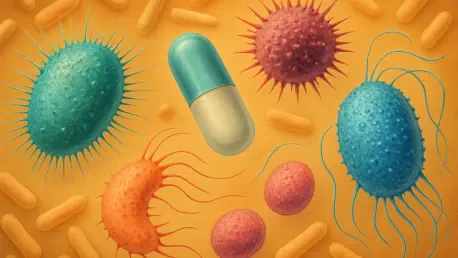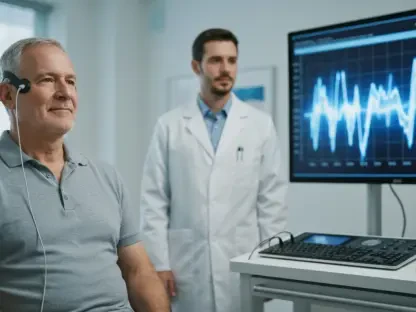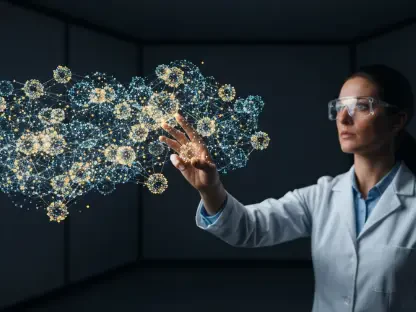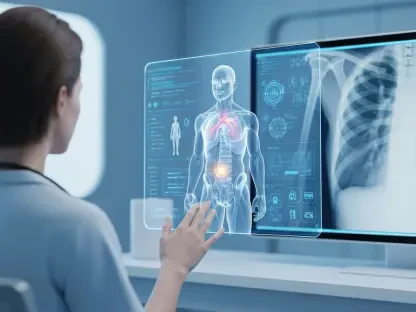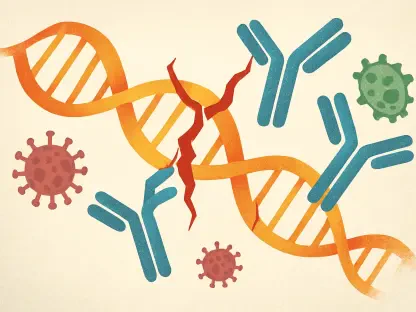Imagine a world where bacterial infections, once easily treated with a simple pill, become deadly threats due to rampant antibiotic resistance, a crisis that is no longer a distant fear but a pressing reality with millions of lives at stake each year as pathogens evolve faster than medical solutions can keep up. The search for new antibiotics has hit a wall with traditional methods, pushing scientists to explore uncharted biological territories like Archaea—ancient microbes that have thrived in extreme conditions for billions of years. This roundup dives into the groundbreaking intersection of artificial intelligence (AI) and Archaea research, gathering insights from various scientific perspectives to uncover whether this innovative approach could yield the next generation of life-saving drugs. The purpose is to explore diverse opinions on the potential, challenges, and implications of using AI to mine these ancient organisms for novel compounds.
Perspectives on a New Frontier in Antibiotic Discovery
The Urgency of Innovative Solutions
Antibiotic resistance stands as one of the most daunting challenges in global health, with conventional discovery pipelines struggling to produce effective new drugs. Many researchers argue that focusing solely on familiar microbial sources like bacteria and fungi has limited the scope of potential breakthroughs. Archaea, a domain of life distinct for surviving in hostile environments such as deep-sea vents and acidic pools, present a largely untapped reservoir of unique biochemical defenses. Experts from academic circles emphasize that these organisms, having evolved over eons, might hold molecular tools capable of combating modern superbugs in ways previously unimagined.
AI as a Game-Changer in Research
A growing consensus among biotechnologists highlights AI’s transformative role in accelerating drug discovery, particularly when paired with unconventional sources like Archaea. Advanced algorithms can analyze vast datasets of microbial proteins at speeds unattainable by traditional lab methods, pinpointing potential antibiotic candidates with precision. Some industry analysts point out that AI tools, trained on extensive peptide libraries, have already shown promise in identifying compounds from Archaea that exhibit antimicrobial properties. This technological leap offers hope for slashing the time and cost associated with developing new treatments.
Skepticism and Unresolved Questions
Despite the excitement, not all voices in the scientific community are fully convinced of Archaea’s immediate relevance to medicine. Certain microbiologists caution that the extreme adaptations of these microbes may not easily translate into practical solutions for human health challenges. The complexity of harnessing their biology for drug production poses significant hurdles, and there’s debate over whether resources should prioritize more familiar microbial domains. This divergence in opinion underscores the need for rigorous testing to validate whether Archaea-derived compounds can truly address resistance effectively.
Diverse Views on AI-Driven Discoveries in Archaea
Uncovering Unique Biochemical Weapons
Many researchers studying extremophiles assert that Archaea’s ability to thrive under harsh conditions suggests they possess distinct mechanisms to fend off bacterial competitors. These mechanisms could serve as novel antibiotics, differing fundamentally from existing drugs derived from bacteria or fungi. Reports from computational biology groups reveal that AI has identified thousands of potential compounds, termed archaeasins, from Archaea proteins, showcasing unique structures that might disrupt pathogens in innovative ways. This perspective fuels optimism about accessing a fresh arsenal against resistant infections.
AI’s Efficiency Versus Traditional Methods
Technological advocates stress that AI’s strength lies in its capacity to process complex biological data far more quickly than manual experimentation. Tools designed to predict antimicrobial peptides have demonstrated success in flagging promising candidates from Archaea, with some studies reporting high rates of activity against drug-resistant strains in initial tests. However, lab-based scientists argue that while AI speeds up the identification phase, the journey from prediction to clinical application remains lengthy, requiring extensive validation to ensure safety and efficacy. This balance of enthusiasm and caution shapes ongoing discussions in the field.
Debating the Practicality of Archaeasins
The concept of archaeasins—peptides with unusual electric charge distributions that target bacterial cells internally—has sparked both intrigue and scrutiny. Some biochemists view these compounds as a potential breakthrough, capable of bypassing resistance mechanisms that thwart conventional antibiotics. Others, particularly in pharmaceutical development, question whether these peptides can be synthesized at scale or remain stable in human systems. The split in opinion highlights a critical gap between theoretical promise and real-world application, urging further exploration into their viability.
Broader Implications and Comparative Insights
Merging Biodiversity with Cutting-Edge Tech
A shared viewpoint among environmental scientists and tech innovators is that blending biodiversity with AI represents a forward-thinking trend in biotechnology. Investigating extremophiles like Archaea aligns with efforts to mine nature’s diversity for solutions to modern problems, from medicine to industrial applications. Comparative analyses suggest that while other AI-driven drug discovery projects focus on synthetic molecules or plant-based compounds, the Archaea approach stands out for targeting one of the oldest forms of life, potentially unlocking evolutionary secrets.
Potential for New Antibiotic Classes
Pharmacology experts speculate that successful development of archaeasins could inspire entirely new classes of antibiotics, fundamentally altering treatment strategies. Unlike many current drugs that attack bacterial outer membranes, these compounds’ internal disruption mechanism offers a novel angle to combat resistance. Yet, some clinical researchers warn against over-optimism, noting that historical attempts to introduce new antibiotic classes have often faced unforeseen toxicity or delivery challenges. This contrast in outlook emphasizes the importance of sustained investment in both research and development.
Redefining Nature’s Role in Medicine
A philosophical shift is evident in opinions from evolutionary biologists who argue that Archaea research redefines humanity’s relationship with ancient life forms. Rather than viewing nature solely as a resource, this work positions it as a teacher, offering lessons from billions of years of adaptation. In contrast, pragmatic voices in healthcare policy stress that such discoveries must prioritize accessibility and affordability to impact global health meaningfully. These differing lenses enrich the conversation around how ancient biology can inform modern therapeutic innovation.
Key Takeaways from the Scientific Community
Highlighting Promising Outcomes
Across various discussions, a notable point of agreement is the impressive antimicrobial activity shown by Archaea-derived compounds in early testing. AI’s ability to sift through immense datasets and identify viable candidates has been widely praised as a critical advancement. Academic forums often cite specific findings, such as high success rates in lab tests against drug-resistant bacteria, as evidence of the approach’s potential to address urgent medical needs.
Calls for Expanded Research
Scientific consensus leans toward the need for broader studies to build on initial successes. Recommendations include enhancing AI tools to predict structural traits of antibiotic candidates and exploring Archaea from diverse global ecosystems for varied molecular tools. Additionally, there’s a push to allocate funding toward extremophile research, recognizing that unconventional sources might hold the key to outsmarting evolving pathogens in ways traditional methods cannot.
Balancing Innovation with Caution
A recurring theme in expert dialogues is the necessity of tempering enthusiasm with rigorous scrutiny. While AI offers speed and insight, many stress that over-reliance on predictive models without thorough experimental backing could lead to setbacks. The community advocates for a balanced approach, ensuring that as research progresses from 2025 onward, each step prioritizes both innovation and patient safety to avoid costly missteps in drug development.
Reflecting on a Path Forward
Looking back, the exploration of AI and Archaea in antibiotic discovery stirred vibrant debate among experts, revealing both immense potential and significant challenges. The insights gathered painted a picture of a field on the cusp of transformation, driven by technology’s ability to unlock ancient biological secrets. Moving forward, the scientific community was encouraged to deepen collaborations between computational and clinical domains, ensuring that promising compounds like archaeasins were rigorously tested for real-world impact. Investment in accessible research platforms and international partnerships emerged as vital steps to scale these innovations. Ultimately, the discussions underscored a collective resolve to keep probing nature’s untapped corners, leveraging tools of today to secure healthier tomorrows.
